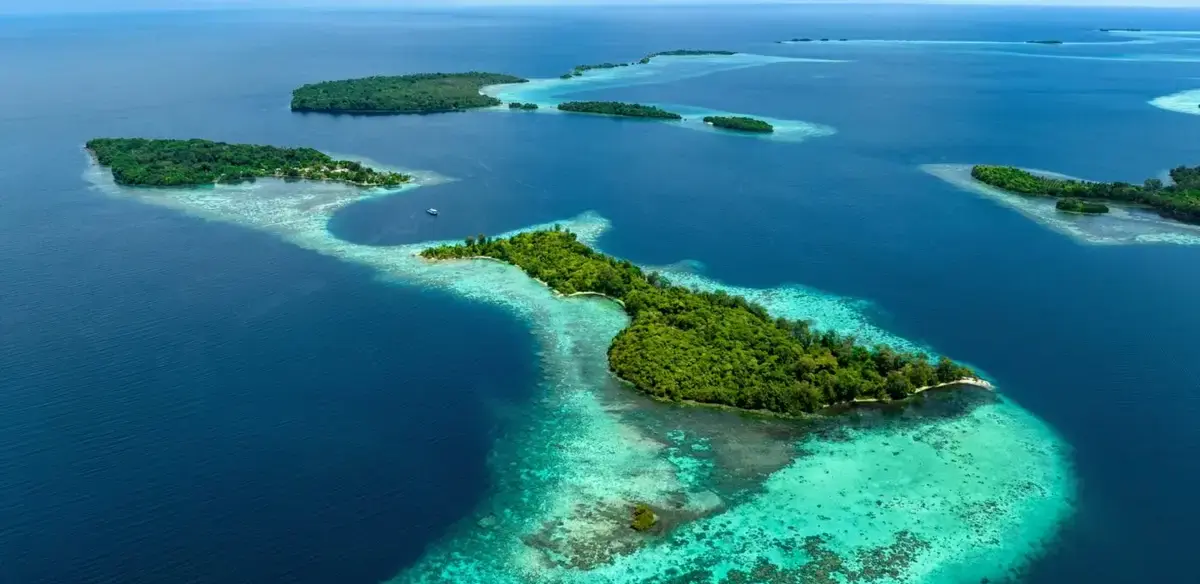The impressive length of this huge coral is 183 meters. This is not a simple, single life form, but a complex collection of individual coral polyps. It is estimated that the massive coral system has grown and expanded over the last three to five centuries. Where is this underwater wonder? The western Pacific Ocean region is often referred to as the “coral triangle”. The scientists who discovered this hidden gem are members of the National Geographic Pristine Seas team.
Meaning of massive coral
As lively as a bustling city but as quiet as a vast desert, this formation is a paradise filled with countless marine species, including a variety of fish, crabs and shrimps. It’s not just a big rock, it’s a vibrant, pulsating ecosystem, mostly brown, with splashes of bright yellow, blue and red. This beautiful coral is affectionately called “Pavona clavus”.
According to Enrique Sal, marine ecologist and resident researcher at National Geographic, the discovery of this coral is as monumental as the discovery of the tallest tree in the world.
“Just when we thought there was nothing more to discover on planet Earth, we find a giant coral made up of nearly 1 billion tiny polyps, pulsating with life and color,” Sala said.
Millions of related organisms
The huge coral is a stark contrast to traditional coral reefs. The latter is a complex network of many coral colonies, whereas this discovery is a separate entity. It constantly grew with polyps originating from larvae settling on the sea floor, and over the centuries it multiplied with millions of other genetically identical polyps.
When the team first spotted this organism, which was 34 meters wide, 32 meters long and more than 5 meters high, they mistook it for a shipwreck. The expedition’s underwater cinematographer dived to a depth of more than 12 meters and discovered that it was a Pavona clavus coral.
What does this discovery mean?
Ronnie Pozala, an officer from the Solomon Islands Ministry of Fisheries, commented on the significance of the discovery.
“For the people of the Solomon Islands, this massive coral discovery is monumental. It reinforces the importance of our ocean, supporting our communities, our traditions and our future,” Posala said.
He emphasizes that such discoveries remind us of our responsibility to protect these natural wonders for the ecological value, livelihoods and cultural identity they provide. Eric Brown, a coral researcher with the Pristine Seas Expedition, sees the giant coral system as a hopeful sign.
“While nearby shallow reefs are being degraded by warming seas, seeing this large oasis of healthy coral in slightly deeper waters is a ray of hope,” Brown said.
Coral resilience and threats
The discovery of this giant coral is a powerful reminder of the resilience of our complex marine ecosystems and highlights the current threats they face. Coral reefs around the world are increasingly affected by climate change, pollution and unsustainable fishing practices.
Pavona clavus in the Solomon Islands, which grows in slightly deeper waters, may highlight a potential adaptation strategy to sea warming and show that some corals can survive while others cannot. Scientists hope this remarkable finding will lead to further research into how deep-water corals are able to thrive despite changing conditions, potentially offering insights into the protection and preservation of more vulnerable shallow-water reef systems.
What are the biggest threats to coral reefs?
Coral reefs are under serious threat due to a combination of natural and anthropogenic factors. Climate change is playing a major role as rising ocean temperatures cause coral bleaching, a process in which corals lose their vibrant colors and vital symbiotic algae, often leading to death.
Additionally, increasing levels of carbon dioxide in the atmosphere contribute to ocean acidification, which weakens the skeletons of corals and inhibits their growth. Human activities such as overfishing disrupt the delicate balance of reef ecosystems by removing key species that help keep corals healthy.
Pollution worsens the problem because runoff from agriculture adds excessive amounts of nutrients to the water, leading to algal blooms that compete with corals for sunlight and space. Efforts to protect coral reefs focus on addressing these threats through global and local measures such as reducing greenhouse gas emissions, adopting sustainable practices, and restoring damaged reef areas.
Source: Port Altele
